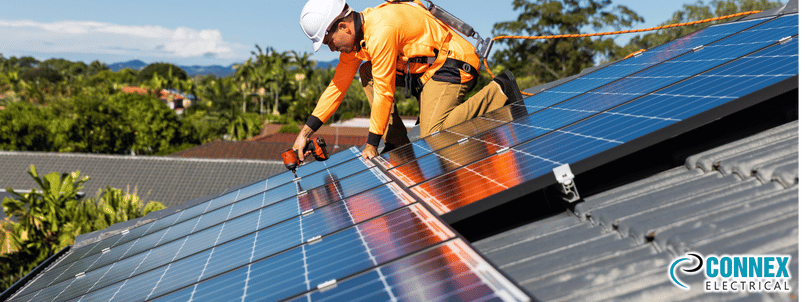As more homeowners in Brisbane explore the benefits of solar energy, one of the most common questions is, “How many solar panels do I need?” The answer depends on various factors such as your energy usage, roof space, and the climate.
This guide will help you understand how to calculate the optimal number of solar panels to meet your energy needs and maximize your investment.
Understanding Your Energy Usage
The first step in determining how many solar panels you need is to examine your household energy consumption. Look at your electricity bills to find out how much energy you use in a year, typically measured in kilowatt-hours (kWh). This figure is crucial as it dictates the scale of the solar system required to cover your energy needs.
Assessing Solar Panel Output
Solar panel output is generally measured in watts (W), and panels on the market today range from about 250W to 400W each. The amount of energy a panel can produce depends on several factors, including:
- Solar Panel Efficiency: More efficient panels produce more electricity from the same amount of sunlight.
- Sunlight Exposure: The amount of direct sunlight your roof receives daily will affect output.
- Panel Orientation and Angle: South-facing panels at a 30-40 degree angle often capture the most sunlight.
Calculating the Number of Panels
To estimate how many solar panels you need, follow these steps:
- Calculate Daily Energy Needs: Divide your annual electricity usage (in kWh) by 365 to find out your average daily usage.
- Estimate Daily Production Needs: Determine how many kWh you need your solar system to produce per day.
- Consider the Solar Panel Output: Divide the daily production needs by the wattage of the solar panels you’re considering, adjusted by their efficiency and the average number of sunlight hours your location receives daily.
For example, if your home uses 30 kWh per day and you’re considering 300W panels that can realistically produce an average of 1.5 kWh/day each (accounting for sunlight hours and efficiency), you would need about 20 panels.
Key Factors to Consider
- Roof Space: The amount of available roof space may limit the number of panels you can install.
- Local Climate: Cloudier areas may require more panels to produce the same amount of energy as a system in a sunnier region.
- Energy Goals: If you aim to be completely off-grid, you might need more panels, whereas if you only want to supplement your energy usage, you might need fewer.
Incentives and Regulations
Check for local incentives like rebates, tax credits, and net metering policies that can influence the cost-effectiveness of installing more panels. Additionally, local building codes and homeowners association (HOA) rules may impact the number of panels you can install.
Conclusion
The number of solar panels you need depends heavily on your personal energy goals and the specific circumstances of your household and location. By understanding your energy usage and the factors that impact solar efficiency, you can make an informed decision about how many panels you’ll need to achieve your desired energy independence.
Interested in leveraging solar energy for year-round benefits? Contact Connex Electrical today to explore personalized solar solutions that fit your home’s needs and start your journey towards sustainable and cost-effective energy independence.

